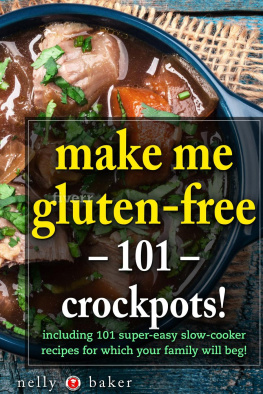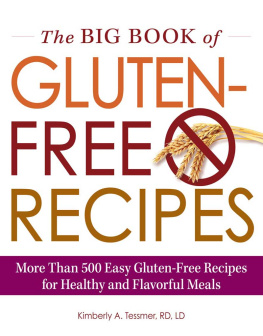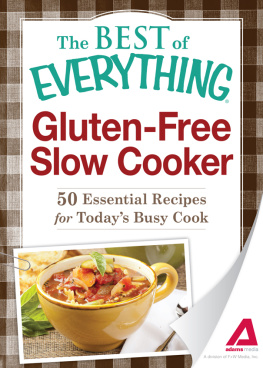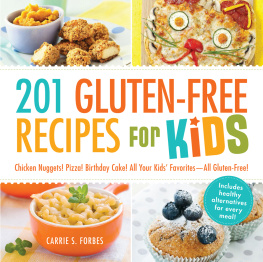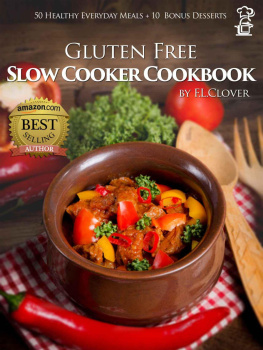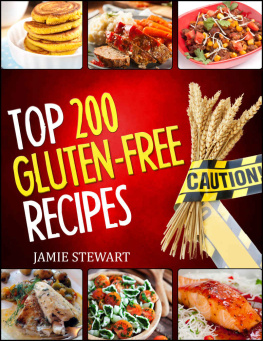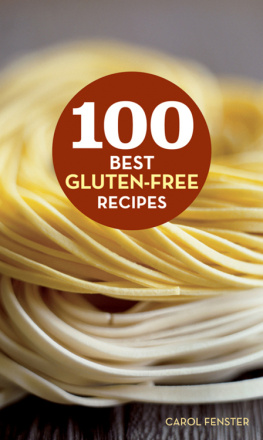
Published in 2017 by Struik Lifestyle, an imprint of Penguin Random House South Africa (Pty) Ltd
Company Reg. No. 1953/000441/07
The Estuaries, 4 Oxbow Crescent, Century Avenue, Century City 7441, Cape Town, South Africa
PO Box 1144, Cape Town, 8000, South Africa
www.penguinrandomhouse.co.za
Copyright in published edition: Penguin Random House South Africa (Pty) Ltd 2017
Copyright in text: Independent Media (Pty) Ltd 2017
Copyright in photographs: Penguin Random House South Africa (Pty) Ltd 2017
All rights reserved. No part of this publication may be reproduced, stored in a retrieval system or transmitted, in any form or by any means, electronic, mechanical, photocopying, recording or otherwise, without the prior written permission of the publishers and the copyright holders.
PUBLISHER: Linda de Villiers
MANAGING EDITOR: Cecilia Barfield
DESIGN MANAGER: Beverley Dodd
DESIGNER: Helen Henn
EDITOR & INDEXER: Gill Gordon
PHOTOGRAPHER: Myburgh du Plessis
STYLIST: Sarah Dall
STYLISTS ASSISTANT: Esme Retief
PROOFREADER: Bronwen Maynier
Print ISBN 978-1-43230-651-9
Contents
Introduction

This book contains a collection of tried-and-tested recipes, which may prove useful when following a gluten-free lifestyle. But please remember that it is not an approved nutritional or dietary guide. If you are unwell or suspect you may have coeliac disease or gluten intolerance, seek professional advice from a doctor or qualified dietitian. And remember; gluten-free recipes are not necessarily healthier than similar recipes containing gluten. Many gluten-free flours are just as refined and high in carbohydrates as regular flour.
What is gluten? Gluten is composed of two proteins gliadin and glutenin which occur in wheat, barley, spelt and rye. Glutenin, a large, loosely coiled protein, provides most of the strength and elasticity in dough. Gliadin, which is much smaller and more tightly coiled, provides the stretch in dough. When these proteins are mixed with water, their respective molecules link up with each other to form long elastic chains, called gluten.
Where does gluten occur? It is important to read the labels on all packaged and processed food. Gluten is found in products you might never have imagined contained wheat, like salad dressings, marinades, sauces and gravies, as well as sweets like liquorice. Spices, seasonings and powdered soups may contain gluten in the form of ingredients used to prevent clumping. Processed meats, sausages and burgers may be bulked out with breadcrumbs or wheat-based fillers, while frozen chips are often coated with a fine layer of flour. Even alcoholic drinks can contain gluten: beer is made from barley, maize and/or other grains. Many cosmetics and lipsticks contain gluten, as do some medicines and supplements. Wheat-free does not necessarily mean gluten-free. Grains like barley, spelt and rye may be wheat-free, but they are not gluten-free.
Coeliac disease The most common reason to follow a gluten-free diet is to treat coeliac disease. Often referred to as an allergy or intolerance, it is an autoimmune disease that occurs when the bodys immune system reacts abnormally to gluten and produces antibodies that attack its own tissue. As a result, the villi lining the small intestine become unable to absorb nutrients, and sufferers can become malnourished. Not everyone who has a gluten intolerance develops coeliac disease. However, many people display a sensitivity to gluten that ranges from mild to severe. This is called non-coeliac gluten sensitivity.
Baking without gluten A mixture of flours generally works best for baking. Pre-mixed gluten-free flour is available from health stores or supermarkets, but many of the recipes in this book have been tested using the gluten-free flour mix on . For convenience, make up a batch the flour mix and store it in an airtight container. Milk powder, which contains protein, helps with the structure, tenderness and browning of baked goods and adds a richness of flavour. However, if you follow a dairy-free diet, you can just leave it out.
Gluten-free flour mix
- 500 g white rice flour
- 350 g brown rice flour
- 200 g potato flour/starch
- 150 g tapioca flour/starch
- 50 ml (30 g) fat-free milk powder
- 10 ml xanthan gum
- Combine all the ingredients in a bowl and use a wire whisk to blend well. Store in an airtight container and use as necessary.
Notes
- We use the gluten-free flour mix in many recipes in this book. Where gluten-free flour mix is specified, the recipe has been tested using this mix. If a recipe calls for gluten-free flour, you can use either the flour mix, a single gluten-free flour (see ), or a mixture of gluten-free flours that you can blend yourself, or buy.
- When calculating quantities, remember that 150 g flour = 250 ml or 1 cup.
- To make self-raising flour, add 5 ml gluten-free baking powder for every 250 ml of flour called for.
Gluten-free flours
- Almond flour
- Buckwheat flour
- Chickpea flour
- Coconut flour
- Cornflour (Maizena, maize flour)
- Flax seed flour
- Macadamia nut flour
- Potato flour/starch
- Quinoa flour
- Rice flour (brown and white rice flour)
- Sorghum flour
- Sunflower seed flour
- Tapioca flour/starch
- Teff flour
Notes
- Where a recipe calls for gluten-free flour, you can use any one of these flours, or a combination of them.
Gluten-free grains
- Amaranth
- Buckwheat
- Corn
- Maize meal (mealiepap)
- Millet
- Oats
- Polenta
- Quinoa
- Rice
- Sago
- Sorghum
- Teff
Unless the packaging states that oats are gluten-free, they may have been processed in a factory that also makes wheat-based products, so cross-contamination can occur.
Gluten-containing flours and grains
- Bulgur wheat
- Couscous
- Pearl barley
- Rye flour
- Semolina
- Spelt flour
- Wheat flour (cake wheat flour, wholewheat flour, bread flour, self-raising flour)
Breakfast

Ricotta hotcakes
Serve these warm with crispy bacon and maple syrup.

- 250 g ricotta cheese
- 180 ml milk
- 2 eggs, separated
- 250 ml gluten-free flour mix (see )
- 5 ml baking powder
- 30 ml castor sugar
- 3 ml salt
- oil for frying
- Combine the ricotta, milk and egg yolks in a bowl and mix well.
- Sift the gluten-free flour, baking powder, castor sugar and salt. Add to the ricotta and mix to combine.
- Beat the egg whites until stiff and fold into the mixture.
- Heat a little oil in a nonstick frying pan. Drop spoonfuls of mixture into the pan and cook until bubbles appear on the surface, then turn them over and cook on the other side until golden in colour.
Next page



